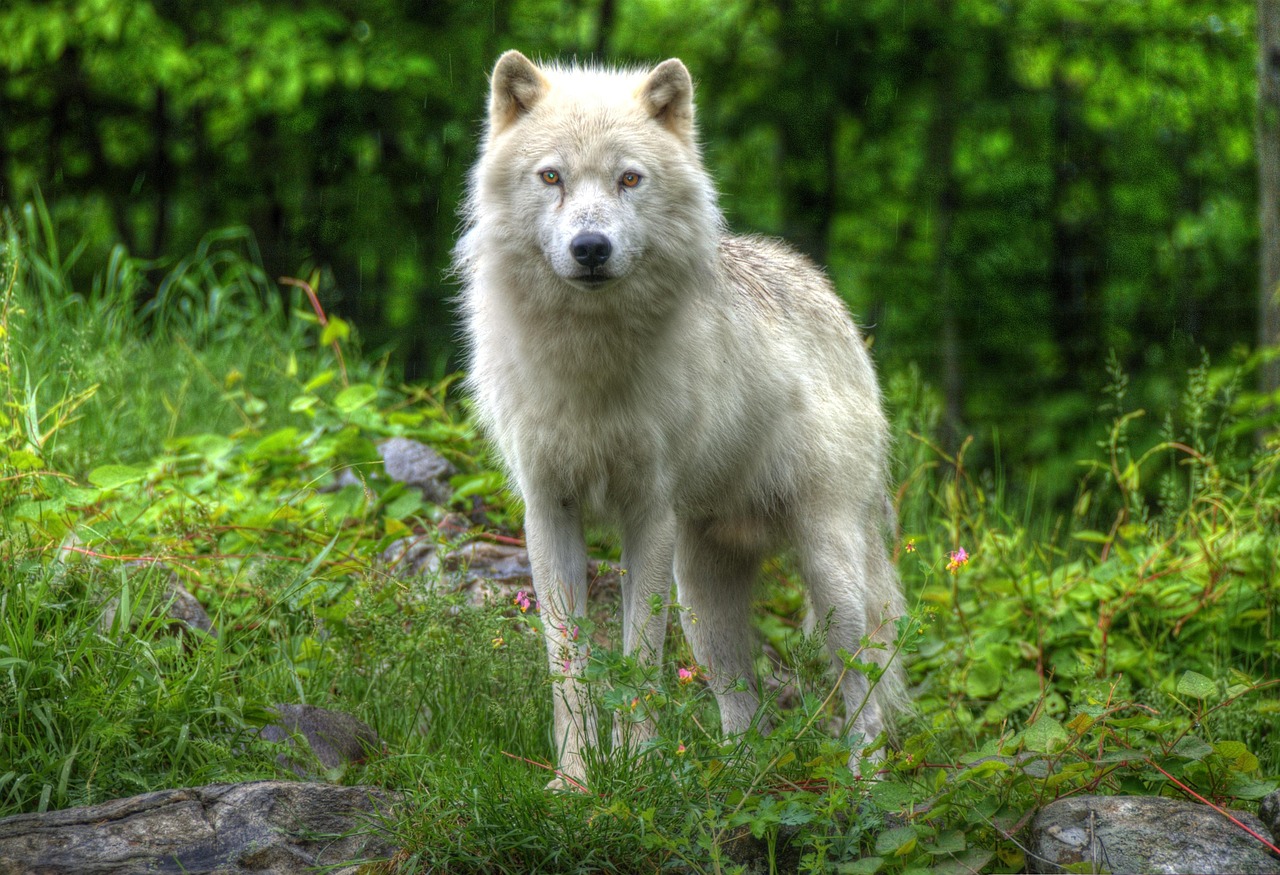On April 7, Colossal Biosciences announced what they called the “world’s first de-extinction,” the births of three dire wolves. These extinct animals lived during the ice ages of the Pleistocene.
Their names are Romulus, Remus and Khaleesi, and they’re the first dire wolves to walk the Earth in over 10,000 years — or so one biotech company and a flurry of recent headlines say. With snowy-white coats and muscular bodies, they looked like they could have walked straight out of the fantasy TV series Game of Thrones.
Ancient dire wolves (Aenocyon dirus) roamed the Americas during the Pleistocene Epoch. DNA from two of these animals ended up informing the new pups’ biology. Colossal scientists extracted DNA from a 13,000-year-old fossilized tooth from Ohio and a 72,000-year-old inner ear bone fossil from Idaho. But it can be tough to get a clear read of an animal’s genome from ancient DNA. In fact, after death, DNA starts to get chopped up into really tiny pieces. Lining up billions of the dead dire wolf’s DNA snippets on a computer and comparing them with the genome of a gray wolf (Canis lupus), scientists can get an idea of what makes the animals different. The team used this information to identify genetic tweaks that might make the gray wolf more dire wolf–like. The researchers modified a coat color gene called CORIN, for example, which gave the pups their light fur. And they tweaked genes linked to body size and ear and skull shape.

This is a gene editing technology, but this technique doesn’t bring back to life an animal that lived 10,000 years ago. In a study previously published on Nature, after analyzing the ancient genomes of five dire wolves, researchers concluded that though the animals looked similar to gray wolves, they were highly different, forging separate evolutionary paths nearly 6 million years ago.
One thing that’s been overshadowed by the dire wolf hubbub is Colossal’s work with endangered red wolves. Colossal identified a group of wolves on the Gulf Coast of Texas and Louisiana that genetically match red wolves, but they’re not officially recognized as such. The team cloned four of these animals from red ghost wolf cells in the lab. The pups could one day be introduced to the wild population to increase its genetic diversity,
That’s not true for animals that have been extinct for thousands of years, which raises some ethical questions, when animals go extinct, other species fill in the gaps in the ecosystem, taking advantage of their newly changed world.

References:





